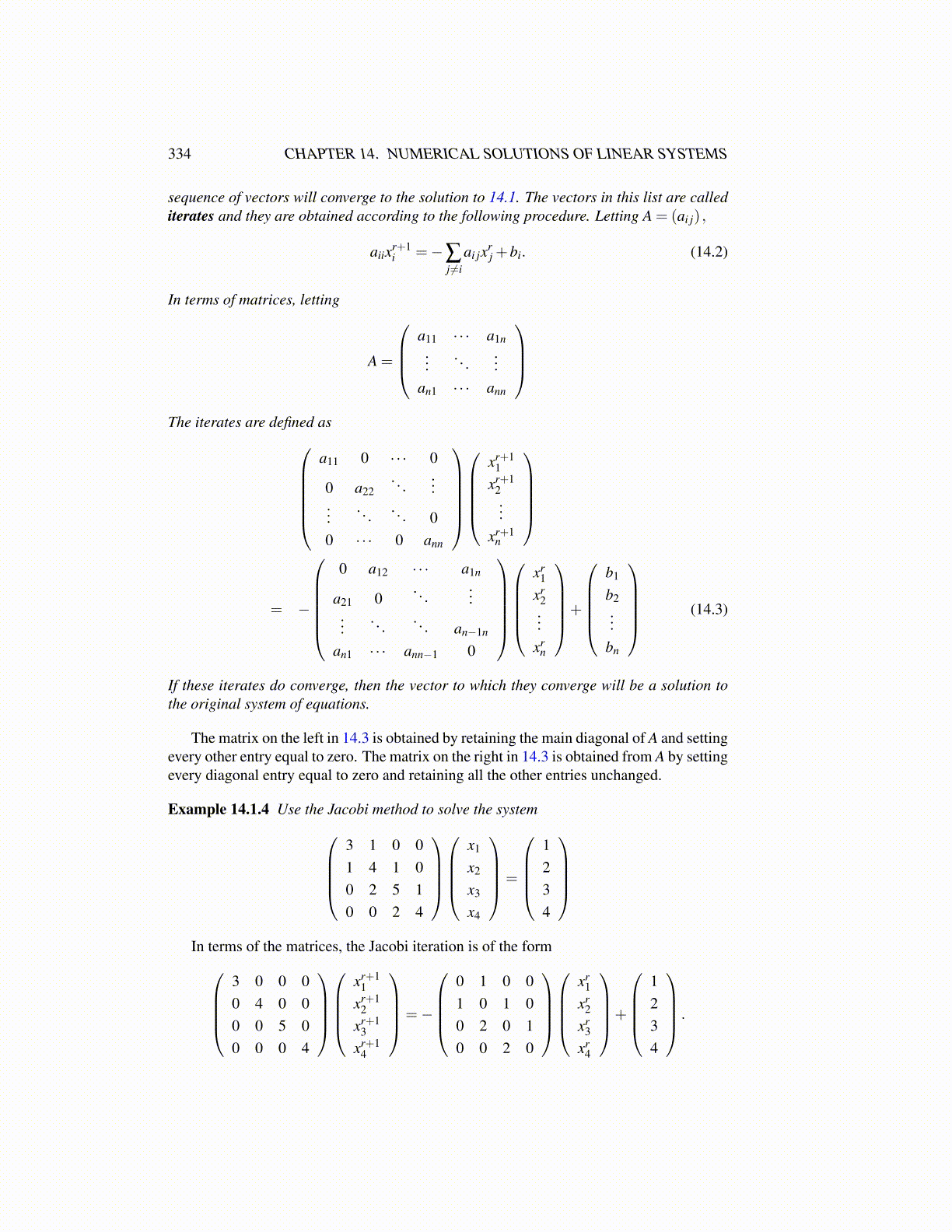
334 CHAPTER 14. NUMERICAL SOLUTIONS OF LINEAR SYSTEMS
sequence of vectors will converge to the solution to 14.1. The vectors in this list are callediterates and they are obtained according to the following procedure. Letting A = (ai j) ,
aiixr+1i =−∑
j ̸=iai jxr
j +bi. (14.2)
In terms of matrices, letting
A =
a11 · · · a1n
.... . .
...an1 · · · ann
The iterates are defined as
a11 0 · · · 0
0 a22. . .
......
. . .. . . 0
0 · · · 0 ann
xr+11
xr+12...
xr+1n
= −
0 a12 · · · a1n
a21 0. . .
......
. . .. . . an−1n
an1 · · · ann−1 0
xr1
xr2...
xrn
+
b1
b2...
bn
(14.3)
If these iterates do converge, then the vector to which they converge will be a solution tothe original system of equations.
The matrix on the left in 14.3 is obtained by retaining the main diagonal of A and settingevery other entry equal to zero. The matrix on the right in 14.3 is obtained from A by settingevery diagonal entry equal to zero and retaining all the other entries unchanged.
Example 14.1.4 Use the Jacobi method to solve the system3 1 0 01 4 1 00 2 5 10 0 2 4
x1
x2
x3
x4
=
1234
In terms of the matrices, the Jacobi iteration is of the form
3 0 0 00 4 0 00 0 5 00 0 0 4
xr+11
xr+12
xr+13
xr+14
=−
0 1 0 01 0 1 00 2 0 10 0 2 0
xr1
xr2
xr3
xr4
+
1234
.